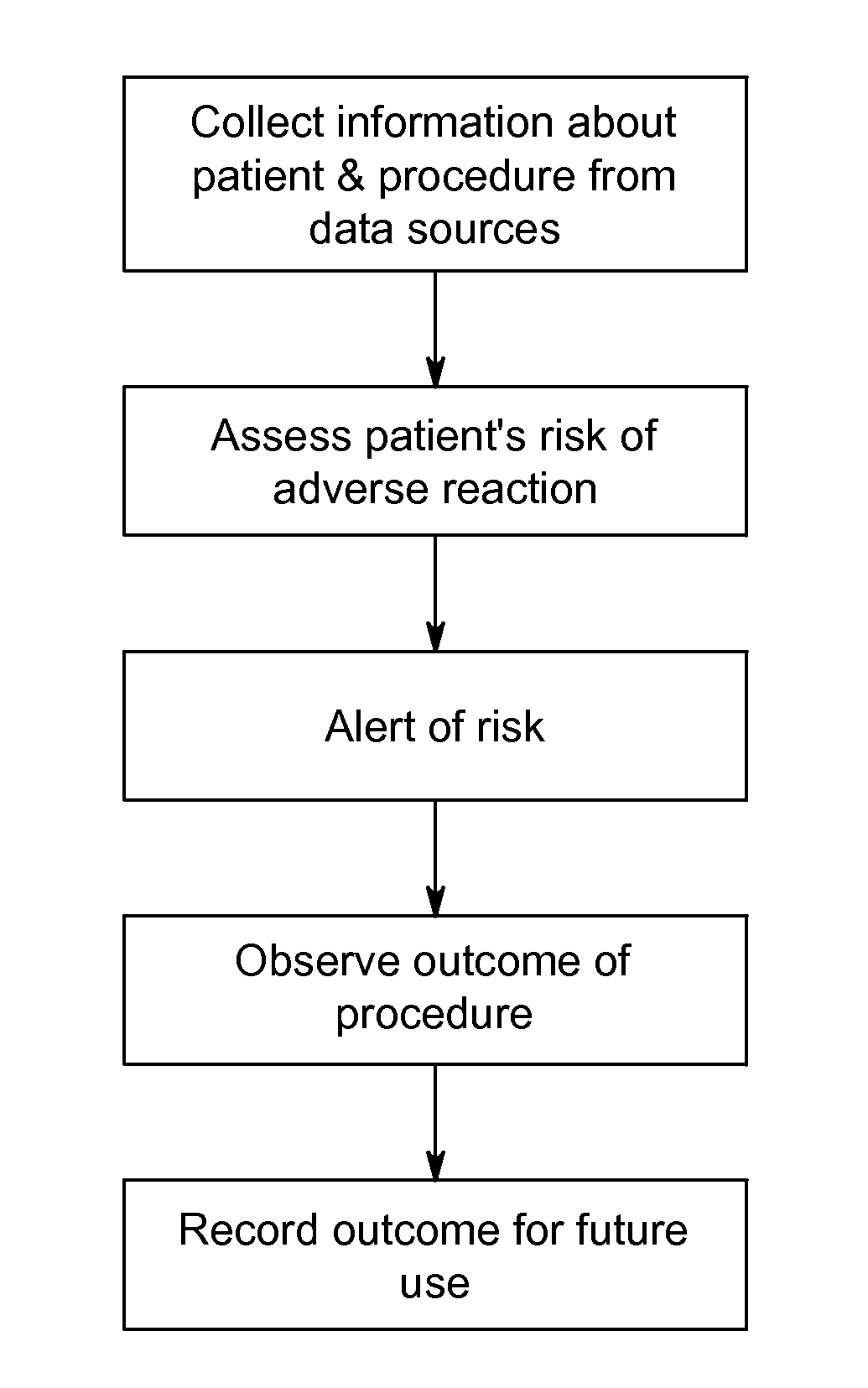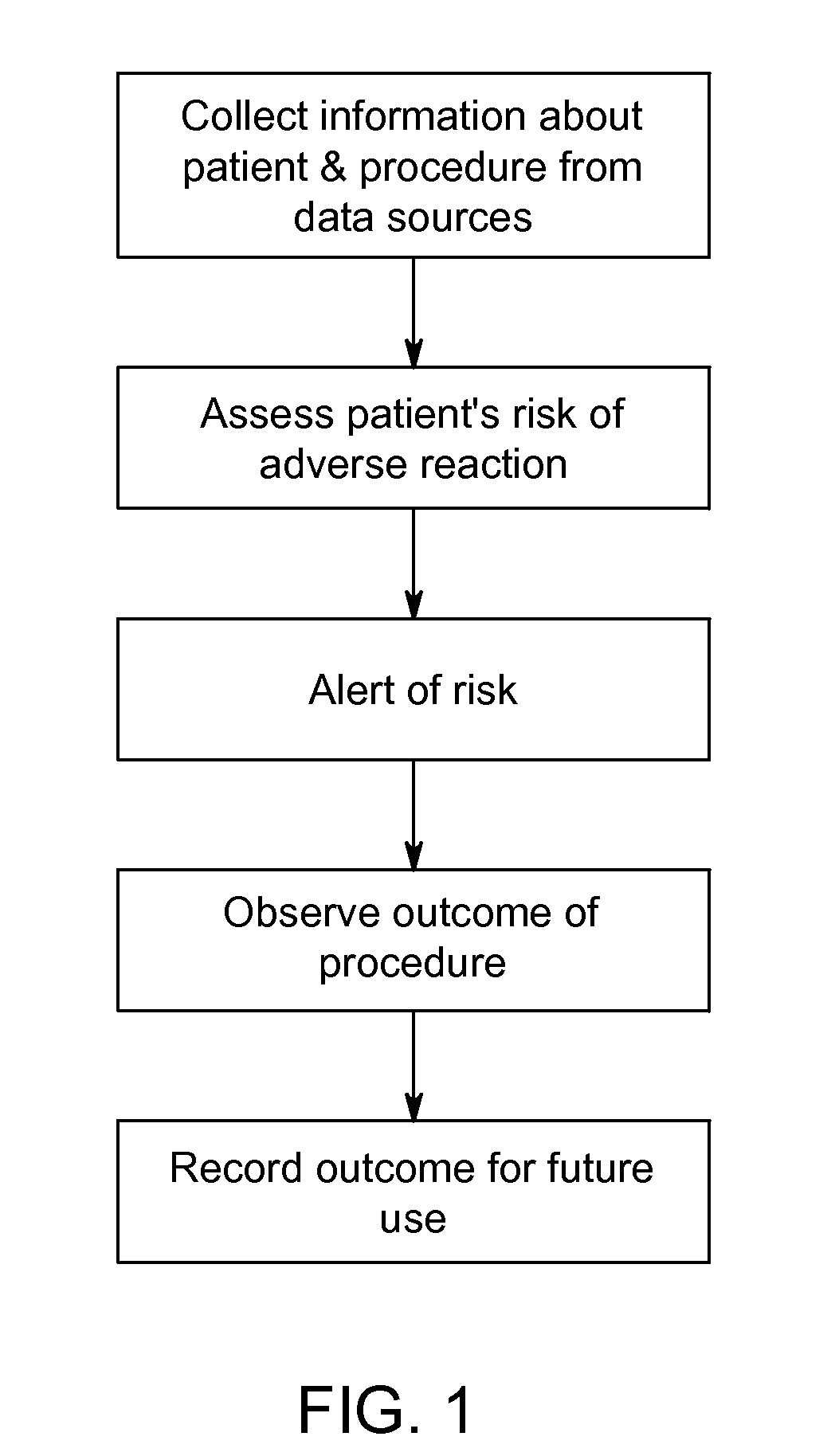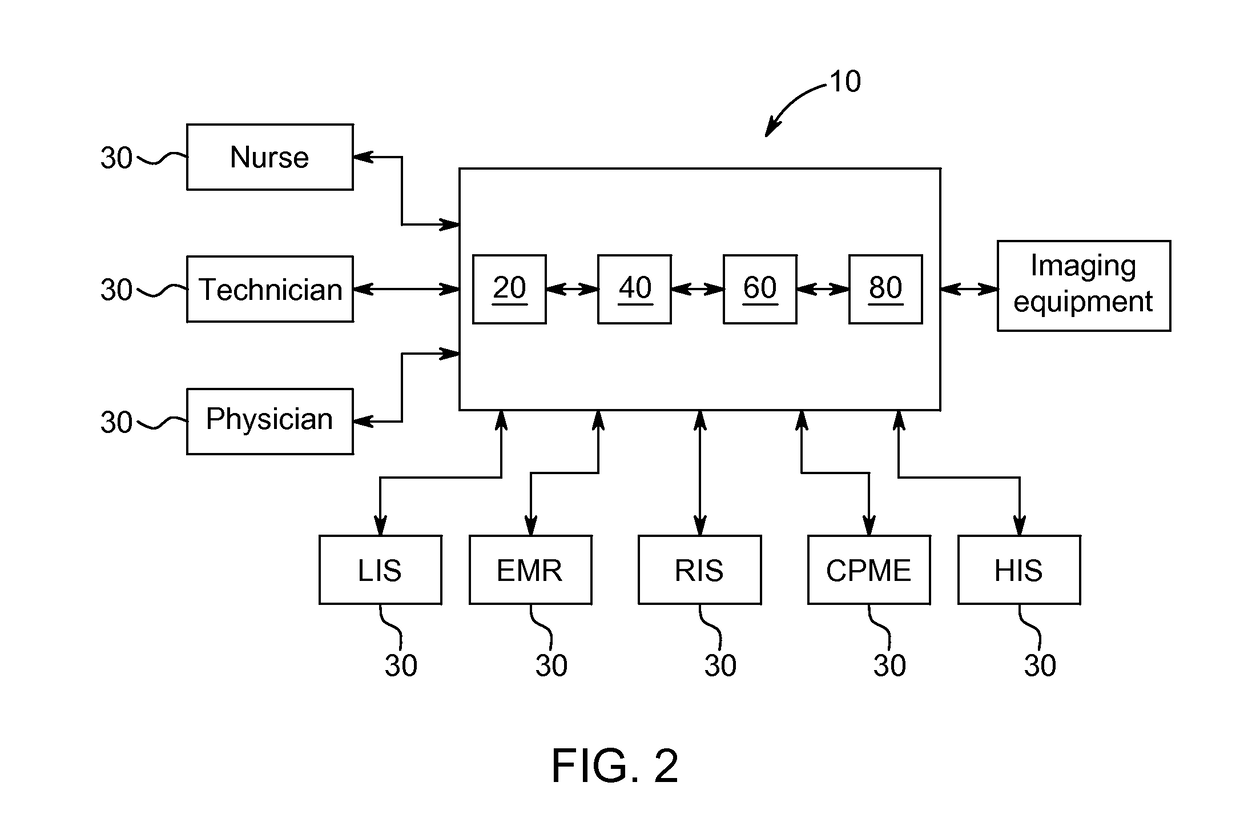Systems and methods for managing adverse reactions in contrast media-based medical procedures
a technology of contrast media and adverse reactions, applied in medical data management, instruments, healthcare informatics, etc., can solve problems such as patients experiencing adverse reactions to contrast media
- Summary
- Abstract
- Description
- Claims
- Application Information
AI Technical Summary
Benefits of technology
Problems solved by technology
Method used
Image
Examples
example 1
[0060]Patient A is scheduled for a contrast imaging procedure. The serum-creatinine reports for Patient A indicate that Patient A has normal serum-creatinine levels. A normal serum-creatinine level would suggest that Patient A is not at risk of suffering a contrast-related adverse reaction. However, system 10 is enabled and data acquisition unit 20 collects various additional pieces of information about Patient A from various information sources 30 within the facility. For example, data acquisition unit 20 acquires from HIS (or another hospital system, such as RIS) information indicating that Patient A has a systolic blood pressure of less than 80 mm Hg, that Patient A suffers from diabetes, that Patient A is over 75 years old, that Patient A suffers from anemia, and that an intra-aortic balloon pump is in use. Risk assessment unit 40 then uses this information to calculate an overall risk score for Patient A based on the collected information by assigning risk values to the differe...
example 2
[0062]Patient B is scheduled for a contrast imaging procedure. The serum-creatinine reports for Patient B indicate that Patient B has normal serum-creatinine levels. System 10 is enabled and data acquisition unit 20 collects various additional pieces of information about Patient B from various information sources 30 within the facility. For example, data acquisition unit 20 acquires from HIS (or another hospital system, such as RIS) information indicating that Patient B has normal blood pressure, that Patient B suffers from diabetes, that Patient B is over 75 years old, that Patient B suffers from anemia, that an intra-aortic balloon pump is in use, and that Patient B has a eGFR score of 60. Risk assessment unit 40 then uses this information to calculate an overall risk score for Patient B based on the collected information by assigning risk values to the different risk factors as follows:
Risk FactorIndividual Risk ScoreNormal blood pressure0Suffers from diabetes3Age over 754Suffers...
example 3
[0064]Patient C is scheduled for a contrast imaging procedure. System 10 is enabled and data acquisition unit 20 collects various pieces of information about Patient C from various information sources 30 within the facility. For example, data acquisition unit 20 acquires from HIS (or another hospital system, such as RIS) information indicating that Patient C has normal blood pressure, that Patient C does not suffer from diabetes, and that Patient C has a normal eGFR score. All of these indications suggest that Patient C is not at risk of suffering an adverse reaction. However, data acquisition unit 20 also collects information indicating that Patient C has a history of adverse reactions from contrast media. Risk assessment unit 40 then uses this information to calculate a total risk score for Patient C based on the collected information by assigning risk values to the different risk factors as follows:
Risk FactorIndividual Risk ScoreMormal blood pressure0Mo diabetes0Normal eGFR0Has ...
PUM
 Login to View More
Login to View More Abstract
Description
Claims
Application Information
 Login to View More
Login to View More - R&D
- Intellectual Property
- Life Sciences
- Materials
- Tech Scout
- Unparalleled Data Quality
- Higher Quality Content
- 60% Fewer Hallucinations
Browse by: Latest US Patents, China's latest patents, Technical Efficacy Thesaurus, Application Domain, Technology Topic, Popular Technical Reports.
© 2025 PatSnap. All rights reserved.Legal|Privacy policy|Modern Slavery Act Transparency Statement|Sitemap|About US| Contact US: help@patsnap.com



